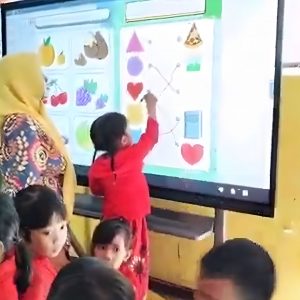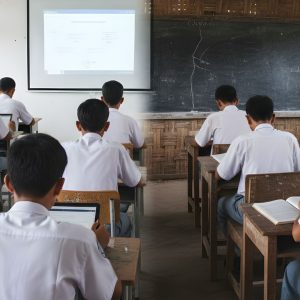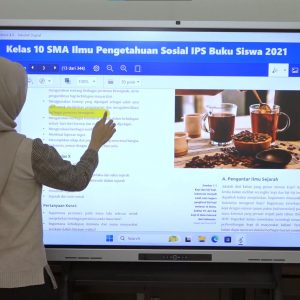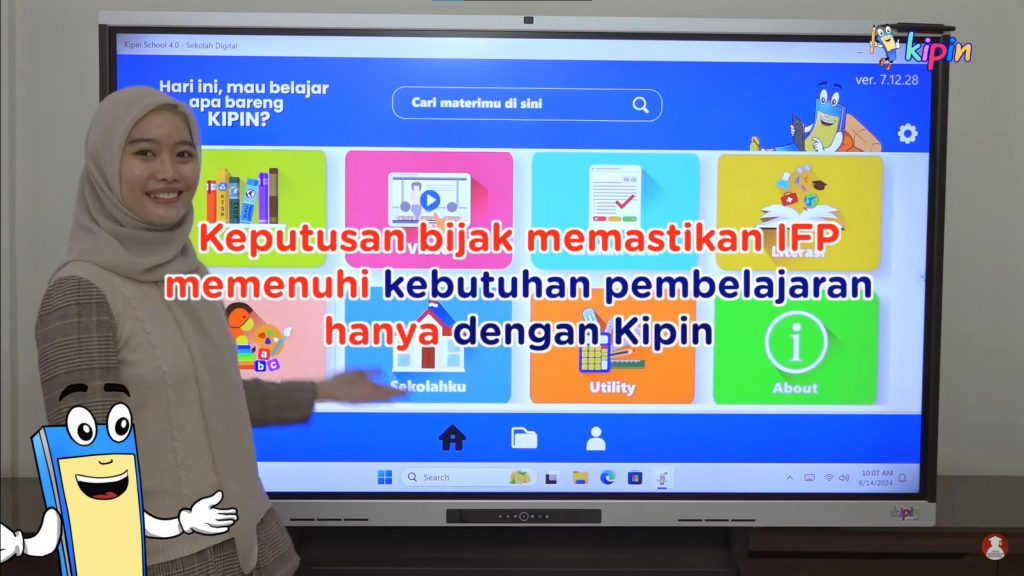
The Indonesian government, through the Ministry of Primary and Secondary Education
(Kemendikdasmen), has launched an ambitious program to digitize classrooms by installing
Interactive Flat Panels (IFPs)—large touchscreen displays measuring 75 to 85 inches—in
thousands of schools across the country. Since its inception over a year ago, thousands of
IFP units have already been deployed, and the program is set to continue.
In a statement made during the 2025 National Education Day (Hardiknas), Minister Abdul
Mu’ti announced a Rp 2 trillion budget allocated for procuring smart boards, educational
TVs, and teacher training. The initiative aims to benefit 15,000 schools this year alone,
representing a strategic move to support the government’s vision of “smart classrooms” in
the digital age.
But One Question Remains: Where’s the Educational Content?
Many of the IFP units currently on the market were originally designed for corporate or office
use—not for K-12 classrooms. As a result, these panels often come with little or no
educational content, sometimes featuring only generic demo software that offers minimal
instructional value.
Educators and local education authorities have voiced growing concerns: without relevant
learning content, IFPs become nothing more than expensive digital whiteboards. It’s a
missed opportunity—and a costly one at that.
Is it not wasteful to invest such a large public budget in high-tech devices that fail to directly
benefit teachers and students in the classroom?
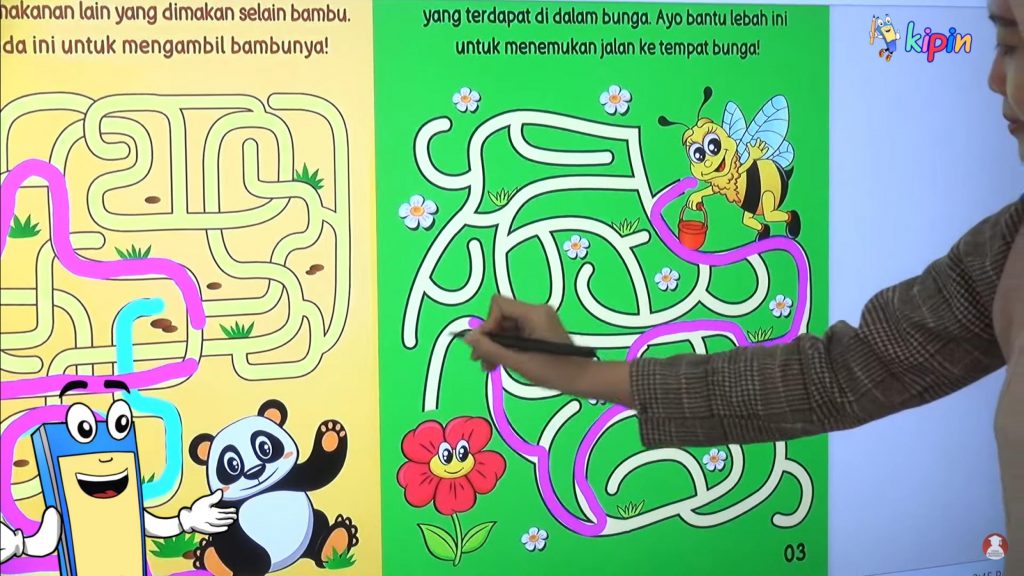
The Solution: Bundle IFPs with Purpose-Built Educational Applications
To ensure IFPs deliver real educational impact, each device must be bundled with a
comprehensive digital learning platform—like Kipin.
Kipin (Kios Pintar) is a proven education solution already in use across thousands of
Indonesian schools. It offers:
- 5,000+ official school textbooks (from primary to senior high school)
- 2,000+ curriculum-aligned educational videos
- 50,000+ practice questions and auto-graded tryouts
- 1,000+ literacy comics and student activity books
Kipin works online or offline, making it especially valuable in areas with limited internet
access. It’s also compatible with any IFP brand or operating system, ensuring seamless
integration with devices already in use.
By combining Kipin with IFPs, schools gain a complete, ready-to-use solution that
empowers teachers and engages students.
A Call to Action: Content Must Be a Requirement, Not an Option
It’s time to establish a standardized checklist for evaluating whether an IFP qualifies as an
effective educational tool—not just a digital device. A simple demo should not be considered
sufficient. Every IFP unit should be required to include:
● Rich educational content
● Interactive, curriculum-aligned learning resources
● Offline usability features
● Easy-to-use teacher tools
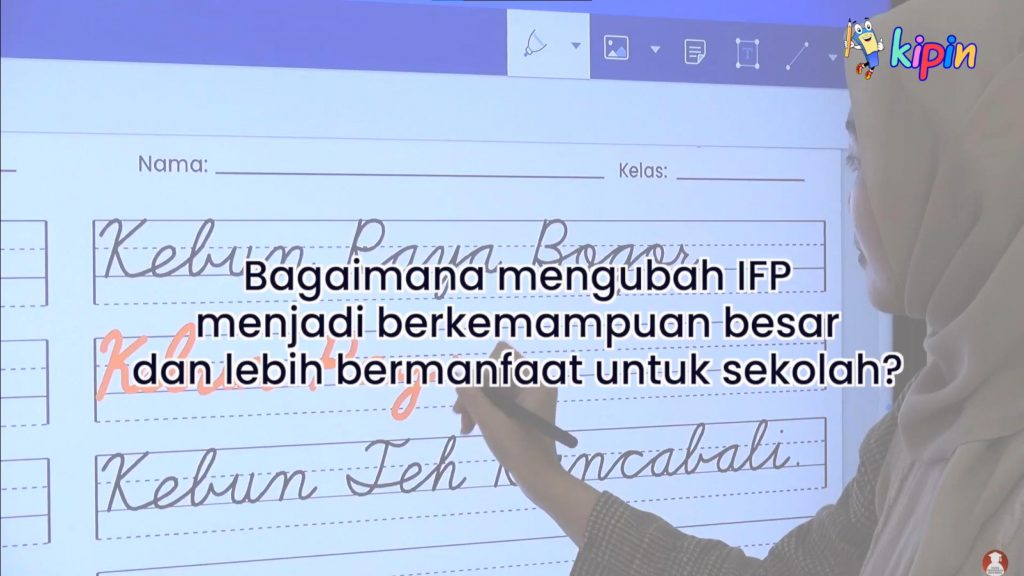
We urge the Kemendikdasmen, Ministry of Home Affairs (Kemendagri), and national
procurement authorities (LPSE) to introduce regulations that mandate educational
content inclusion in every IFP procurement. This ensures that every public rupiah spent
contributes directly to student learning outcomes.
Conclusion: Technology is a Tool, Not the Goal
An IFP is just hardware—it is not a complete solution. Without meaningful educational
content, it remains a blank screen.
To make Indonesia’s “smart classroom” program truly impactful, let’s combine hardware
with powerful educational software like Kipin. Let’s ensure these digital investments lead
not just to modernization—but to measurable improvements in learning quality.
Don’t let digital boards become expensive classroom ornaments. Bundle them with Kipin to
deliver real educational value.
More information:
- Watch how Kipin maximizes IFP effectiveness:
https://www.youtube.com/watch?v=YFhDMDc0Qyo - Another Kipin product video (116,000+ views):
https://www.youtube.com/watch?v=gLOQ9llNZ_k - Learn more: https://kipin.id/
- Contact us on WhatsApp: +62 877-8889-8811


